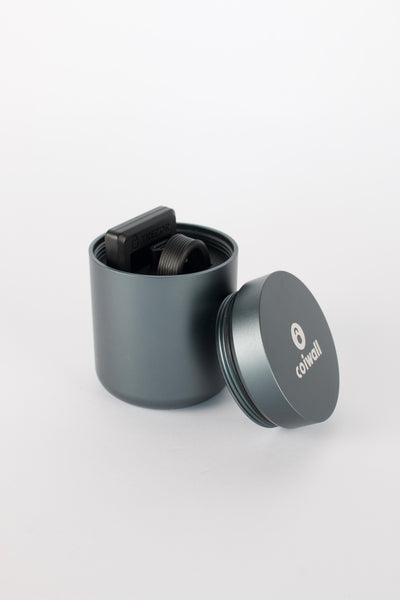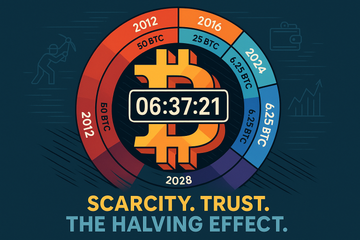You'd think people would get tired of waiting around for the next fireworks show in crypto. Yet, mention the word “halving,” and the room perks up—traders, miners, and even folks quietly tinkering with their Ledger wallets. So, what’s really behind the slow-burn magic of halving, this milestone that sets the rhythm for Bitcoin and its ilk? Let’s chat about what makes it tick, why it stirs so many emotions, and whether all the fuss has merit beyond sensational headlines.
What’s a Halving, Anyway? (And Why Should You Care at All?)
At its core, a halving is beautifully simple: it’s the process where certain cryptocurrencies—especially Bitcoin, the undisputed heavyweight—cut the “mining reward” in half. If you’re picturing a literal guillotine for coins, you’re not alone. But really, it’s just lines of code doing the slicing, keeping new mintings in check. The whole point? Scarcity. Just like rare baseball cards or limited-edition sneakers, fewer fresh Bitcoins means more intrigue, and possibly, more value (Binance Academy).
To make it even clearer, Bitcoin was built to have a hard cap: no more than 21 million will ever exist. This isn’t just trivia for pub night—this controlled release is one of the main things that makes Bitcoin special among digital assets.
The Tick-Tock of Bitcoin: How the Halving Works
Here’s the thing—unlike office birthdays or tax season, Bitcoin halvings stick to their own schedule. Roughly every four years (or, if you want to get geeky, every 210,000 blocks), the network automatically reduces the reward given to miners. Think of it as the world’s slowest shrinking paycheck—miners used to nab 50 BTC for every block. Then it dropped to 25, then 12.5, then 6.25... and as of spring 2024, a modest 3.125 BTC (Coinbase).
Trust me, miners notice. Some even plan their hardware upgrades or electricity contracts around these events. And let’s be real, the eager folks behind Trezor and Ledger wallets are usually gearing up too, since halvings often trigger waves of new interest (and new holders wanting to lock up their stash securely).
Timeline Recap
- 2012: First halving, 50 → 25 BTC
- 2016: Second halving, 25 → 12.5 BTC
- 2020: Third halving, 12.5 → 6.25 BTC
- 2024: Fourth halving, 6.25 → 3.125 BTC
- Estimated 2028: Next up—it halves to 1.5625 BTC
Rinse and repeat every four years until, sometime around the year 2140, the very last Bitcoin will be mined. Sounds futuristic? Honestly, it’s both distant and weirdly imminent in the crypto world’s sense of time (Binance).
Does Scarcity Really Change the Game?
This is where things get spicy. Halving’s whole reason for being is to slow down the tap on new coins. With more than 90% of all Bitcoins already out there, each new drop in new supply—if demand stays strong—can create substantial pressure. The analogy? Imagine a stadium full of fans, but the vendor now only tosses out half as many T-shirts as before. Someone’s going to pay extra for that shirt.
History tells us that halvings tend to precede major price rallies. Is it always cause-and-effect? Some skeptics say the market just gets overly worked up, buying the rumor and selling the news. Others insist it’s baked into the numbers—reduced supply, rising price. The truth? It’s a tangle of psychology, mathematics, and plain old speculation. But hey, that’s part of the fun, isn’t it?
The Life of a Miner: Fewer Rewards, Tougher Choices
Let me explain—if you’re a miner, you’re living in a world of narrow margins and loud machines. Every time the reward halves, your profit can take a serious hit unless prices rise dramatically or you’re running some seriously efficient rigs (or maybe a hydro plant in your backyard). It’s no wonder some miners jump ship to mine altcoins, like Litecoin, especially if the numbers just don’t add up anymore (Investopedia).
And here’s where the emotional nuance sneaks in: miners are some of the most invested, both emotionally and financially, in seeing Bitcoin thrive. When a halving approaches, you can almost feel the collective heartbeat getting louder—the excitement, the worry, the heated debates on Reddit.
Security, Scarcity, and the Trust Factor
Here’s another layer: the halving isn’t just about supply. It’s about trust in the protocol. People rely on the system’s predictability, so they’re willing to store life savings on hardware wallets like Ledger or Trezor. The scarcity narrative is only meaningful if everyone believes the math holds up. Imagine if someone could sneak in extra coins—suddenly, the value proposition collapses. Halving is like crypto’s built-in lie detector, reassuring holders that the rules can’t be bent, at least not by some shadowy central authority.
Halving’s Ripple Effect: Beyond Bitcoin
Sure, Bitcoin gets the spotlight, but it’s not the only act in town. Litecoin, for one, does its own halving show (every 840,000 blocks), and other coins mimic the trick to instill a sense of programmed scarcity. Do they always get the same price magic? Not guaranteed, but the vibe is familiar—anticipation, speculation, social media buzz.
And as each halving closes in, hardware wallet companies see a fresh wave of cautious buyers wanting to tuck away their coins. It's like a mini-boom for everyone selling security, both digital and emotional.
The Waiting Game—And What Comes Next
Maybe the whole drama of halving is less about numbers and more about trust, excitement, and belief. Scarcity works as long as everyone is watching the same clock, checking the same block height, and keeping their coins safe. With another halving somewhere over the horizon, you can count on social feeds buzzing, charts getting overanalyzed, and, just maybe, another all-time high lurking not too far ahead.
So next time you see the countdown clock, take a moment. Is it hype? Is it economics? Or is it just a rare chance for a global community to rally around a digital ritual? You decide. In the meantime, make sure your wallet—digital or hardware—is ready for whatever comes next.











